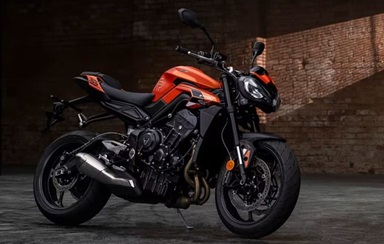Overview
The Bajaj Pulsar is among the top five motorcycles in Indian automobile history. The first Pulsars changed the game and allowed Bajaj to become the dominant motorcycle manufacturer it is today. On October 28 of 2021, Pulsar celebrated its 20th anniversary. To honor the event, Bajaj introduced two Pulsar series motorcycles to the Indian market. The Bajaj Pulsar F250 and N250, semi-faired and naked category sports bikes, have been introduced to the series.
The new Bajaj Pulsars are powered by 249cc engines and are the most powerful Pulsar yet.
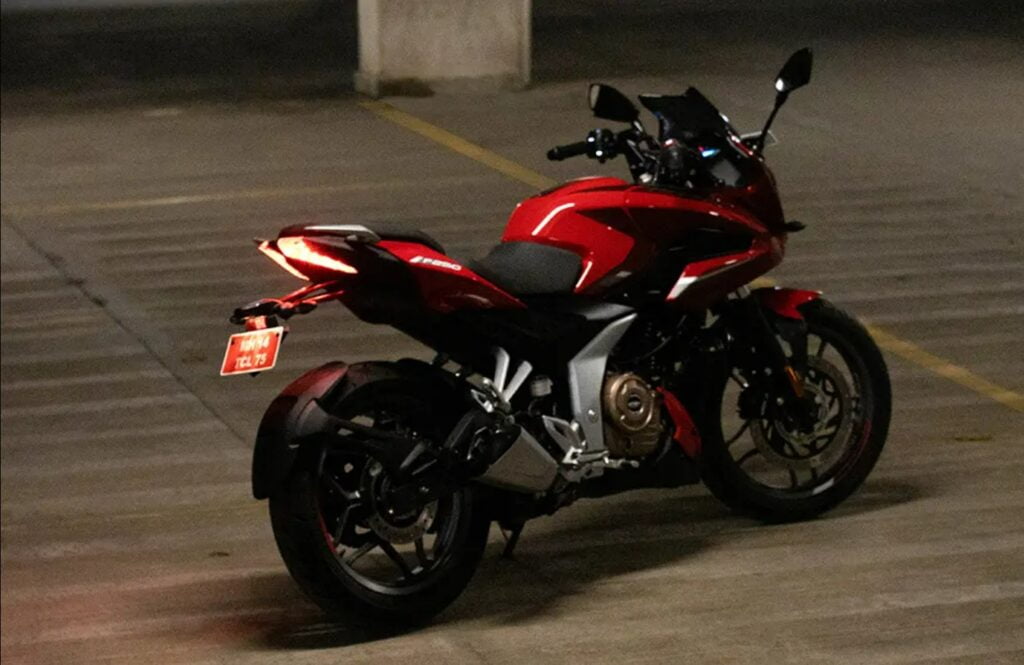
Image Credit: Bajaj Auto
Pulsar F250 and N250 design
The fuel tank, side panels, and tail parts of the Pulsar N250 and F250 are the same. The semi-fairing, more angular LED running lights, and tall clip-on handlebars of the F250 distinguish it from Pulsar N250.
Although many features of the N250 and F250 are similar to the current Pulsar lineup, their looks are entirely new.
The front of the F250 readily distinguishes between the naked and semi-faired versions. The gasoline tanks, side profile, and tail section of both bikes are identical. With a roomy split seat and a lovely curve where the body panels meet the model version of the Classic Pulsar tail-amp, the rear is stylish. The rear section is hefty and reminds me of the Dominar 400.
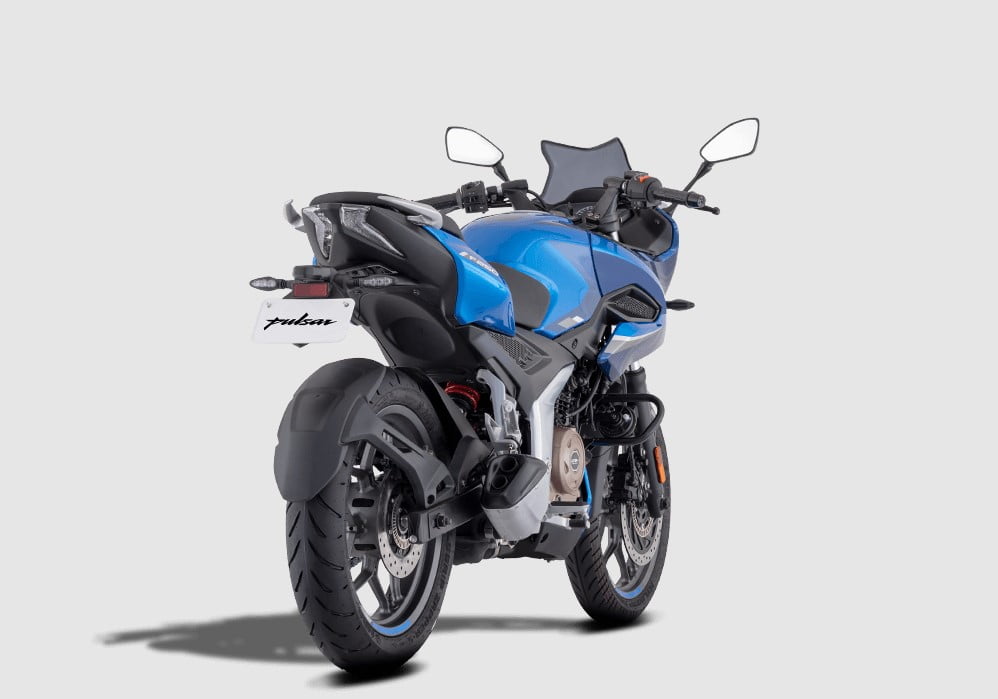
It receives a split LED tail light that complements the new split seat.
The short twin-port exhaust muffler does not impress much and it looks weird. It doesn’t go with the bike’s lines. However, viewing the bike from the back makes the 130-section tyre look thin. Bajaj could have used a more giant tyre, but it would have required tradeoffs in fuel efficiency as well as suspension setup tweaks to maintain the existing handling character.
Bajaj Pulsar F250 and N250 Instrument Cluster
Another nod to the new Pulsars N250 and F250 can be found in the new analog-digital instrument cluster. Watching the swoop of a proper tachometer needle is a refreshing change in an age dominated by motorcycles with full digital clusters.
Cost appears to be the only apparent reason why Bajaj decided not to follow in the footsteps of TVS and offer Bluetooth connectivity. The updated display now includes important features such as a clock, gear position indicator, and distance to empty gauge. It’s a simple display with an analog rev counter and a digital speedometer.
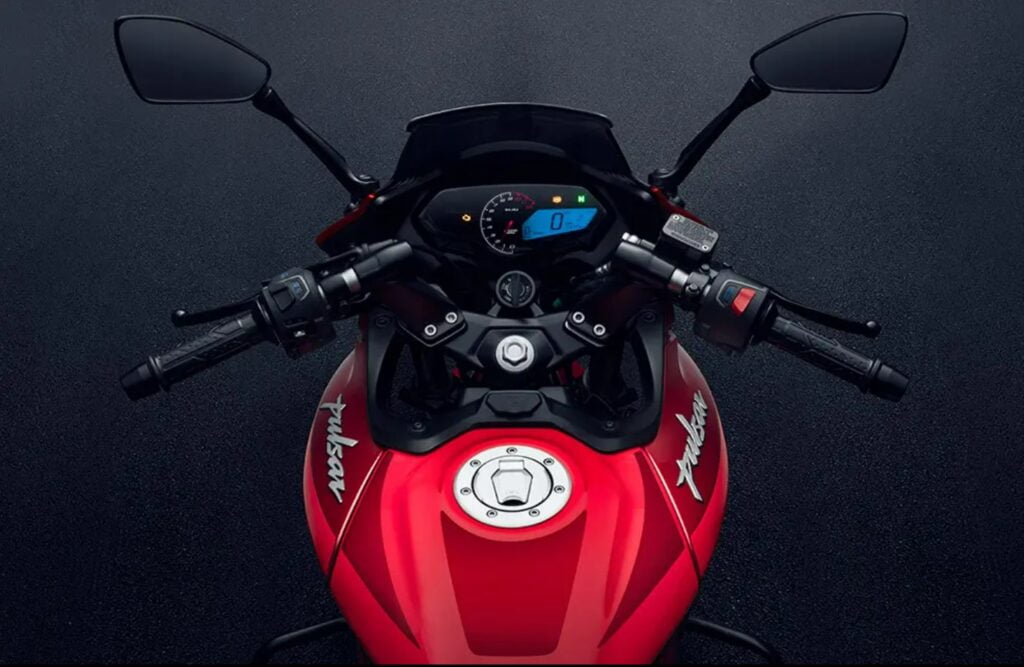
There is a gear position and range indicator as well. But there is no Bluetooth connectivity and no turn-by-turn navigation. However, you get a USB port to keep your phone charged while using the navigation on the phone.
Read Also: Royal Enfield Super Meteor 650 launched
Engine and performance
The Bajaj Pulsar F250 and N250 are both powered by a 249.07 cc oil-cooled single-cylinder engine that produces 24.5 PS at 8750 rpm and 21.5 Nm at 6500 rpm. This engine is paired with a 5-speed manual transmission with a slip-and-assist clutch.
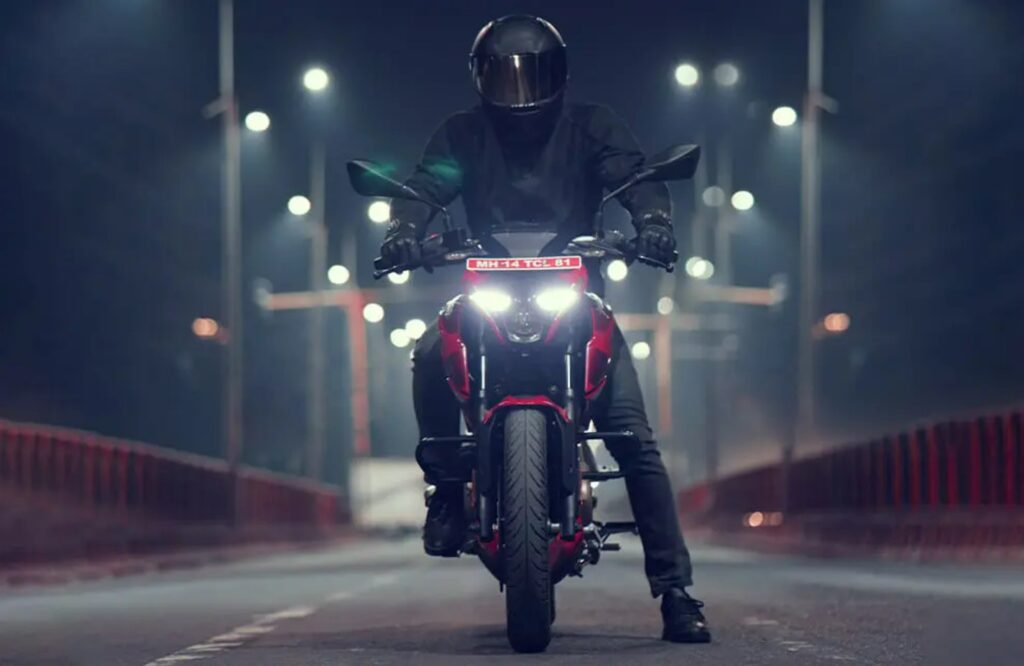
Bajaj has also released a new tubular frame with a telescopic fork and mono-shock. The Indian bikemaker has employed a 300mm disc up front and a 230mm disc at the rear for braking, which is assisted by single-channel ABS. The Pulsar F250 and N250 ride on 100/80-17F front tyres and 130/70-17R rear tyres.
Bajaj Pulsar F250 and N250 Colors and Price
The Indian bike maker is offering both sports bikes in three exciting colors: Caribbean Blue, Racing Red, and Techno Grey.
Bajaj Pulsar F250 and N250 both come in two variants with single- and dual-channel ABS. At Rs 1.38 lakh, the Pulsar N250 is priced similarly to the feature-rich TVS Apache RTR 200 4V and the Yamaha FZ25/FZ25 S. It generates more power than either of them, though. The Suzuki Gixxer SF250 and Bajaj Pulsar RS200 are both much more expensive than the Pulsar F250, which is priced at Rs 2,000 more than the N250.





